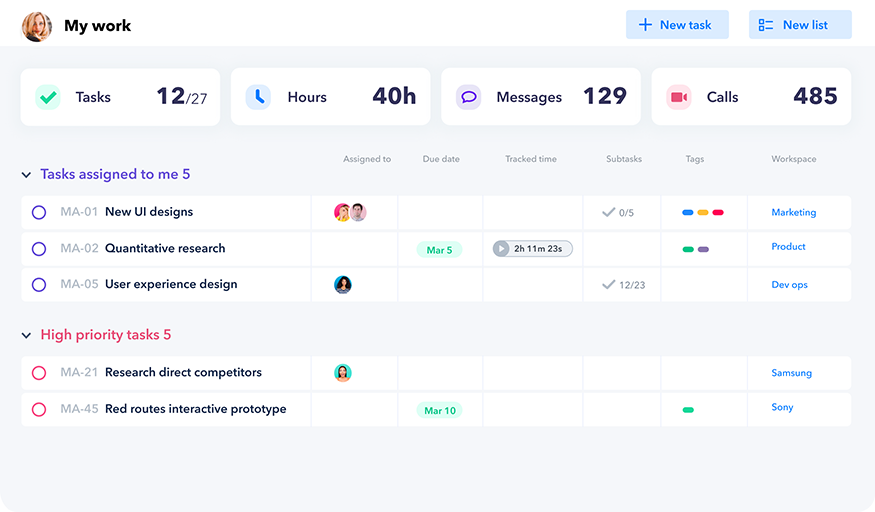At the heart of every nonprofit organization are its volunteers. Managing volunteers in nonprofit organizations plays a significant part in deciding the success of a nonprofit’s programs, campaigns, and events. That’s why managing volunteers is of the utmost importance to nonprofits.
A volunteer management strategy will lead to volunteers spending their talent and time effectively. It will also raise their productivity and engagement. For the nonprofit, it will result in better volunteer recruitment and retention.
Actively attracting the right talent, training them to be effective, and giving them meaningful roles to be productive can be achieved through a volunteer talent management system. In this article, we explain volunteer management and its various facets and share some proven practices to make it work for your nonprofit.

What is volunteer management?
Volunteer management refers to the process nonprofits can use to recruit, monitor, engage, and retain their volunteers. It takes into account all actions that the organization has to undertake to manage its group of volunteers.
With a robust volunteer management strategy and actionable tactics, a nonprofit organization can create positive, productive, deeply beneficial, and long-term volunteer experiences.
The 4 main facets of volunteer management
Any nonprofit that wants to document, improve, or codify its volunteer management should focus on these four key areas.
Creating a volunteer program
What do you hope to achieve with your volunteer program? Where do volunteers fit in your scheme of things? What tasks will the volunteers accomplish in your nonprofit? What qualifications and skills do they need? Do you need volunteers seasonally, for specific events and programs, or throughout the year?
Your volunteer program plan will reveal the answers to these questions. It will also show you whether you need skill-based volunteers, long-term volunteers, or event volunteers.
Recruiting volunteers
Digital platforms have made it easy to find and recruit volunteers. Start with a section on your website listing volunteering opportunities, ideally on your homepage. Share those regularly on your social media pages and emails too.
Mention the positive effects of volunteering with your nonprofit and share stories from your current and past volunteers. Do keep in mind that the recruiting process has to be effortless from a candidate’s point of view.
Training volunteers
After recruitment, it’s important to assign the right roles to your new volunteers and train them. It could be through a short video, document, or several in-person sessions, depending upon the role. The objective is to equip them to perform their roles confidently.
Heycollab can make onboarding effective through its Project Boards. You can set up onboarding with various steps that the new volunteers have to follow.
Recognizing volunteers
Participants feel engaged and motivated when the organization recognizes their efforts. Through recognition and stewardship programs, your nonprofit can not just appreciate your current set of volunteers but also interest potential candidates to join you.
Recognition can be in the form of a certificate or a message from the leadership. It will be more effective if it’s shared on your website and social media pages.
Best practices for successful volunteer management
These recommendations are easy to implement and can have a significant effect on your volunteer management.
Simplify onboarding
While you need to give them adequate information about your nonprofit and train them for their tasks, it’s important to keep it simple. Minimize the number of forms and make it applicant-friendly. If the process is complex, it will reflect poorly on your organization.
Once they join, ensure that they don’t have to repeat chores. With Heycollab’s Duplicate Boards and Tasks, you can keep tasks consistent by duplicating boards and tasks of similar nature or the same project.
Share your expectations
When volunteers know their precise roles, they’re more likely to perform well. You can share a document with your expectations from them based on their roles.
Workspaces from Heycollab can help you create dedicated workspaces for various volunteer teams or projects. This is how you can easily segment and delegate work.
Understand their needs and preferences
One of the best ways to improve volunteer experiences is by listening to their needs and understanding their preferences. Heycollab’s Messaging can allow volunteers and managers to transparently communicate and interact within the platform.
When volunteer roles are aligned with their interests, their productivity will improve.

Heycollab project management
Be with them during their shifts
Your volunteers shouldn’t feel alone during their tasks, especially if they’re new to them. Take an active role and provide necessary supervision. Give examples of previous occasions when you or others performed the task.
Share contact details of your leadership team and encourage them to reach out for any queries. They should know that you’re there to help them.
In short
With a volunteer-friendly onboarding process, transparent communication, and better alignment of roles, your nonprofit can immensely improve its volunteer management strategy and its overall performance.
————-
Heycollab is a project management tool built for teams like yours. With a free 14-day trial you can try out all the cool features. To get started visit https://heycollab.com/


